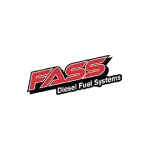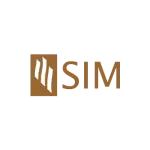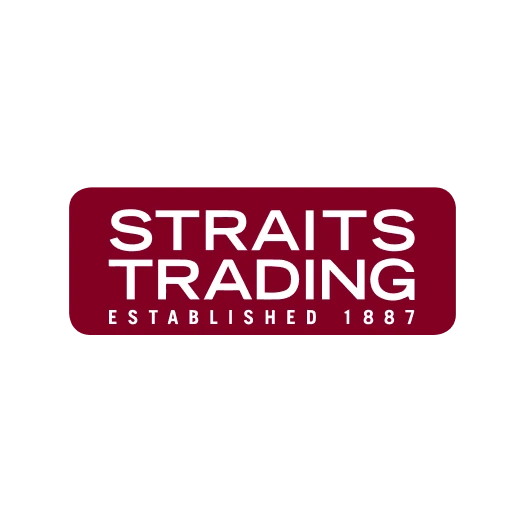Running a business today, I’ve realized that mastering supply chain management isn’t just a nice-to-have; it’s critical for staying competitive. From sourcing raw materials to delivering products to customers, every step must flow smoothly, or operations can quickly become derailed.
For me, the game-changer has been using an ERP system. It ties everything together, from logistics to inventory management and gives me full visibility into operations. Pair it with the right delivery apps, and suddenly even complex supply chains start running efficiently.
In this post, I aim to share ten key ways ERP software has transformed supply chain management in my experience, enabling businesses like mine to cut costs, boost efficiency, and delight customers. Let’s dive in and explore how you can elevate your supply chain to the next level.
Table of Content:
Table of Content
Key Takeaways
|
Understanding ERP and Supply Chain Management
ERP (Enterprise Resource Planning) is a complete software solution that integrates several organizational business operations and activities. It functions as a centralized system, linking many departments, including those dealing with manufacturing, human resources, and finance.
Supply Chain Management refers to the administration of activities involved in the flow of goods and services. Therefore, find the right delivery apps SCM to optimize and automate. It includes customer service, planning, sourcing, production, and logistics.
ERP enables effective inventory management, demand forecasting, procurement, order processing, and logistics optimization when it is integrated into supply chain management. Additionally, organizations can improve the efficiency and overall excellence of the supply chain.
How to Choose the Right ERP for Supply Chain Management?
Choosing the appropriate ERP system that is tailored to your supply chain management needs helps in achieving seamless operations and increased efficiency. Here are a few things to think about:
1. Features that fit your supply chain needs: Ensure the ERP includes essential modules such as inventory control, demand forecasting, logistics, and procurement.
2. Scalability for future growth: Choose an ERP system that grows with your business, capable of managing increasing transaction volumes, more suppliers, and expanding customer demands.
3. Seamless integration: Select an ERP system that connects effortlessly with your existing tools and technologies to ensure smooth data flow and synchronized supply chain processes.
4. Real-Time insights: Choose an ERP with instant data access and advanced analytics to monitor supply chain performance, adapt quickly to market changes, and make smarter decisions.
5. User-friendly interface: Choose an ERP with an intuitive design to boost user adoption, reduce training time, and ensure your supply chain team works efficiently.
6. Expert vendor support: Select an ERP provider with strong supply chain expertise and responsive support to ensure smooth implementation and continuous optimization.
By carefully weighing these factors, you can select an ERP system that aligns with your organization’s objectives, resulting in enhanced supply chain management and long-term economic success.
10 Ways ERP Can Help You Achieve Supply Chain Excellence
Achieving excellence is a never-ending effort for businesses looking to remain competitive and satisfy customer expectations in the dynamic world of supply chain management. Let’s look at ten significant ways that ERP may transform your supply chain.
1. Centralizing inventory control
Real-time visibility into stock levels, orders, and demand trends is provided by ERP systems, allowing more informed decision-making and accurate inventory planning.
Further, businesses can maximize working capital, cut carrying costs, and ensure that products are available whenever needed by preventing stockouts and decreasing excess inventory.
2. Real-time inventory tracking
With ERP’s real-time inventory tracking, businesses can watch order status, keep an eye on inventory levels, and react swiftly to shifting demand. Real-time visibility enables the effective management of stock replenishment, increasing the responsiveness of the supply chain as a whole.
3. Demand forecasting and planning
Businesses may create precise demand projections using historical data, market trends, and consumer insights thanks to ERP’s data-driven methodology. Organizations can optimize production schedules and enhance customer service.
4. Automated procurement
By automating the creation of purchase requisitions, purchase orders, and supplier selection, ERP streamlines the procurement process. This automation not only reduces manual errors but also speeds up the procurement cycle.
5. Efficient order management
Order processing and fulfillment are made simpler by ERP, allowing organizations to manage orders more effectively from reception through delivery. The danger of errors and delays is decreased with the help of automated order processing and tracking. This efficiency will keep your customers satisfied and lead to repeat business.
6. Route optimization
Businesses can design and implement more effective delivery routes with the help of ERP’s route optimization capabilities. Organizations can reduce transportation costs and delivery lead times while enhancing the effectiveness of their supply chains by considering variables such as delivery locations, traffic patterns, and vehicle capacity.
7. Real-time analytics and reporting
ERP offers real-time data analytics and reporting, enabling companies to track supply chain metrics and key performance indicators (KPIs). These priceless data-driven insights help decision-makers make better choices, quickly spot areas for improvement, and take proactive measures to address supply chain issues.
8. Supplier management and collaboration
By centralizing supplier data, monitoring performance, and promoting collaboration throughout the procurement process, ERP enables improved supplier management. A modern Supplier Relationship Management (SRM) software also enhances supplier engagement and collaboration while reducing costs.
9. Improve logistics and transportation strategies
To minimize these risks, businesses need strategies that enhance transportation efficiency, whether through route optimization, refined scheduling, or the use of technology to monitor shipments and adjust logistics in real-time.
10. Enhance risk management and contingency planning
Supply chains must be able to adapt to sudden changes in supply or demand. Companies can reduce risks by identifying threats, preparing backup plans, and maintaining full visibility from suppliers to customers.
With measures such as using alternative suppliers, adjusting routes, or implementing production changes, many disruptions can be managed.
Here is the summary table about 10 ways ERP can help you achieve supply chain excellence, to make it easy to understand:
| 10 ways ERP transforms supply chain | Description |
|---|---|
| Centralizing inventory control | ERP provides real-time stock visibility, enabling cost reductions, preventing stockouts, and ensuring product availability through accurate inventory planning. |
| Real-time inventory tracking | ERP’s real-time inventory tracking improves stock control, prevents bottlenecks, and boosts supply chain responsiveness. |
| Demand forecasting and planning | ERP utilizes data-driven forecasting to optimize production, minimize lead times, and ensure timely deliveries, ultimately resulting in enhanced customer service. |
| Automated procurement | ERP automates procurement tasks, reducing errors, streamlining cycles, and enhancing supplier relationships for more efficient supply chain operations. |
| Efficient order management | ERP streamlines order processing and fulfillment with automation, reducing errors and delays while boosting customer satisfaction and loyalty. |
| Route optimization | ERP route optimization enables businesses to reduce costs, save time, and enhance supply chain efficiency by planning more effective delivery routes. |
| Real-time analytics and reporting | ERP provides real-time analytics and reporting, helping businesses track KPIs, identify improvements, and make faster, data-driven decisions. |
| Supplier management and collaboration | ERP enhances supplier management by centralizing data, tracking performance, and fostering collaboration to enhance reliability and lower costs. |
| Improve logistics and transportation strategies | ERP reduces risks by optimizing routes, improving schedules, and using real-time tracking technology to boost transportation efficiency. |
| Enhance risk management and contingency planning | ERP minimizes risks by identifying threats, creating backup plans, and ensuring visibility, utilizing strategies such as alternative suppliers, route adjustments, or production adjustments. |
Benefits of ERP for Supply Chain Management
There are several benefits to implementing ERP into supply chain management processes. Some of them are:
- Streamlined processes and cost savings: ERP automates manual tasks and accelerates workflows. Enhanced operational efficiency and cost savings result from this streamlining.
- Smart inventory control: ERP’s real-time tracking and demand forecasting ensure optimal stock levels, reducing stockouts and minimizing costs.
- Data-driven decisions: ERP provides real-time visibility and analytics across the supply chain, enabling businesses to identify bottlenecks and respond promptly to shifting market demands.
- Reliable data synchronization: ERP ensures accurate, real-time data across the supply chain, enhancing order accuracy, timely deliveries, and customer satisfaction.
- Enhanced collaboration: ERP fosters communication and coordination across the supply chain, reducing delays and strengthening supplier relationships.
Businesses can greatly benefit from using ERP to enhance supply chain management, including increased productivity, optimized inventory levels, improved decision-making, enhanced collaboration, and improved customer service.
Improve Your Supply Chain Management with HashMicro Supply Chain System
HashMicro’s Supply Chain Management System empowers businesses to take full control of their logistics and procurement by streamlining operations and improving visibility across the entire supply chain.
Easily manage procurement, monitor inventory, and track supplier performance with centralized data. With live dashboards and automated notifications, businesses can respond quickly to issues and ensure smooth, uninterrupted operations.
Key features of HashMicro’s Supply Chain Management System:
- Smart Procurement Management: Automate purchase requisitions, supplier selection, and order creation to minimize errors and accelerate procurement cycles.
- Real-Time Inventory Visibility: Track stock levels, orders, and demand trends instantly to prevent stockouts and reduce excess inventory.
- Supplier Performance Tracking: Evaluate and compare supplier reliability with data-driven insights for better decision-making and stronger partnerships.
- Route Optimization: Design efficient delivery routes by analyzing traffic, delivery points, and vehicle capacity to cut costs and shorten lead times.
- Cost and Efficiency Monitoring: Monitor supply chain expenses and lead times in real time, supporting better operational and financial planning.
- Predictive Demand Planning: Use AI-driven analytics to forecast demand, optimize production schedules, and ensure timely deliveries.
Want to see how this system can improve efficiency and optimize your supply chain management? Schedule a free demo today or click the banner below to get pricing details and solutions tailored to your business needs.
Conclusion
Conclusively, ERP systems provide a game-changing way to improve supply chain management and spur business success. Businesses can achieve unmatched efficiency, cost-effectiveness, and customer satisfaction in their supply chain operations by utilizing ERP’s capabilities.
Additionally, the integration of ERP enables businesses to make data-driven decisions, assure precise real-time tracking, and promote supply chain collaboration. Plus, adopting ERP gives businesses the ability to handle complexity, react quickly to market needs, and acquire a competitive edge. To get more information on this system, you can tryout the free demo.
Frequently Asked Questions about Improving Supply Chain Management
-
What are the 7 C’s of Supply Chain Management?
The 7C’s of Logistics are Connect, Create, Customize, Coordinate, Consolidate, Collaborate, and Contribute, providing a useful framework for improving operations.
-
What are the 5 R’s of Supply Chain Management?
The 5Rs of Supply Chain Management (SCM) are Right Product, Right Place, Right Time, Right Quantity, and Right Condition. Ensuring the right product meets customer needs accurately.
-
What does improving the supply chain mean?
Supply chain efficiency involves maximizing existing resources to deliver a product to the end-user promptly and cost-effectively. Efficiency can be achieved through supply chain visibility that reduces inventory levels and warehousing costs.


